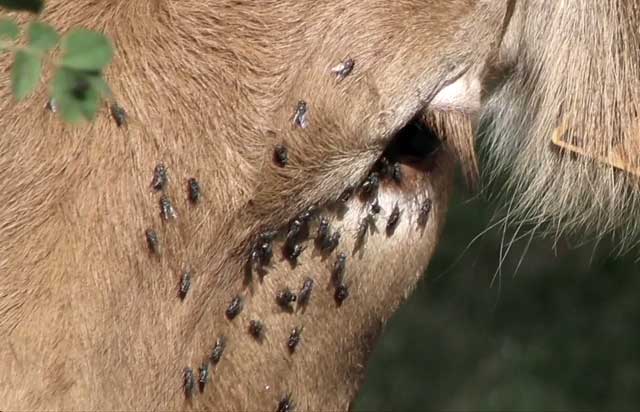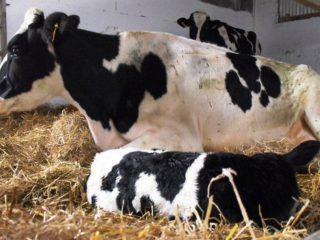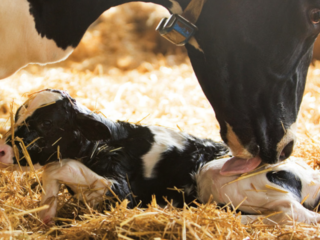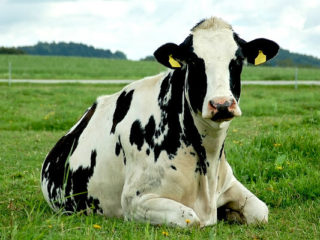Content
Anaplasmosis of cattle (cattle) is a fairly common parasitic disease that can cause significant harm to animal health. The disease rarely leads to the death of livestock, however, it is difficult, and its treatment is associated with considerable financial investments and time costs. That is why the fight against this disease is combined with a set of preventive measures aimed at preventing re-infection. The danger of the disease lies in the fact that even after recovery, some of the recovered animals continue to carry the infection.
What is anaplasmosis
Cattle anaplasmosis is a dangerous blood-parasitic infection that causes cramps in the limbs, fever, severe physical exhaustion of animals, anemia and the development of irreversible pathologies in the work of the internal organs of livestock. Such processes are associated with the vital activity of unicellular bacteria (anaplasma), which rapidly multiply in the blood of a sick individual and fill the blood vessels in the shortest possible time. At risk of cattle anaplasmosis are primarily cows, goats and sheep.
Harmful bacteria live colonially and at a high concentration of anaplasma in the blood, the metabolism in the animal's body is disrupted, and the redox processes are suspended. Ultimately, they cut off the supply of oxygen to the internal organs and tissues of livestock, which leads to oxygen starvation. When the disease is neglected, anemia is diagnosed in cattle.
Life cycle of anaplasma
Anaplasmas are parasites with two hosts. They feed on nutrients found in the blood of cattle, but they pass from one individual to another mainly in the body of ticks and other insects. When a disease vector sticks to an animal, harmful microorganisms enter the bloodstream of the livestock. Soon after infection of cattle, anaplasmas begin to multiply rapidly inside erythrocytes, platelets and leukocytes, forming whole colonies in a matter of days. Reproduction occurs by budding or dividing the parent cell.
Bacteria enter the body of ticks or other vectors of anaplasmosis by sucking the blood of infected animals. In the body of insects, parasites multiply primarily in the intestines and malpighian vessels, from where they can be transmitted to the offspring of carriers of the infection.
Thus, the life cycle of anaplasma includes the stages of reproduction both in the body of insects - the main carriers of anaplasmosis, and in the body of cattle.
Conditions for the spread of the disease
The main sources of anaplasmosis are blood-sucking insects, which include:
- ixodid ticks;
- mosquitoes;
- horseflies;
- biting beetles;
- flies;
- sheep bloodsuckers;
- midges.
It is not uncommon for an outbreak of anaplasmosis to result from contact of cattle with infected tools or equipment.
Symptoms of anaplasmosis in cattle
The effectiveness of treatment largely depends on the stage at which anaplasmosis was diagnosed in cattle. To do this, you need to know the first signs of infection with an infection:
- a sharp increase in the body temperature of the animal;
- discoloration of the mucous membranes of cattle - an excess of bilirubin in the blood of sick individuals leads to the fact that the mucous membranes acquire a yellowish tint;
- heavy, intermittent breathing caused by oxygen deprivation;
- rapid pulse;
- physical exhaustion, cattle are rapidly losing weight;
- lack of appetite;
- lethargy, apathy of behavior;
- cough;
- disruption of the digestive tract;
- decrease in milk yield;
- swelling of the limbs and dewlap in the last stages of anaplasmosis;
- sterility in males;
- miscarriages in pregnant individuals;
- weakness;
- convulsions and fever;
- anemia.
The course of the disease
Anaplasmas that have penetrated into the blood of cattle cause metabolic disorders in the animal's body and inhibit redox processes. As a result, the life span of erythrocytes is reduced, and hematopoiesis is impaired. The hemoglobin in the blood falls, and this, in turn, causes oxygen starvation.
Insufficient oxygen supply to the tissues and organs of cattle during anaplasmosis causes anemia and hemoglobinuria. As a result of disruption of metabolic processes in cattle, a rapid accumulation of toxins begins in the body of infected individuals. Intoxication provokes the development of inflammatory processes, swelling and subsequent hemorrhage in the internal organs of livestock.
Diagnostics
Treatment of the disease is complicated by the fact that it is not so easy to diagnose anaplasmosis. Its symptoms largely overlap with a number of other diseases, which leads to erroneous diagnoses and the choice of the wrong treatment regimen.
Most often, cattle anaplasmosis is confused with the following diseases:
- babesiosis;
- anthrax;
- leptospirosis;
- piroplasmosis;
- theileriosis.
The correct diagnosis is possible only after laboratory studies of a blood smear of an individual with suspected anaplasmosis.
Treatment of anaplasmosis in cattle
At the first signs of illness, the infected individual is separated from the herd to confirm the diagnosis and subsequent treatment.
In the fight against anaplasmosis, a whole complex of drugs is used. In particular, the following drugs have worked well:
- "Morphocyclin";
- "Terramycin";
- "Tetracycline".
These drugs are administered intramuscularly to sick animals after dilution in a novocaine solution (2%). Dosage: 5-10 thousand units per 1 kg of live weight. The course of treatment lasts 5-6 days, the medicine is administered daily.
No less popular is "Oxytetracycline 200" - a drug that has a long-term effect on the animal's body. It is also administered intramuscularly, once a day at intervals of 4 days.
A speedy recovery is facilitated by treatment with "Brovaseptol", which is given to a sick individual once a day at intervals of 1 day. Dosage: 0.1 ml per 1 kg of live weight.
Another method involves the treatment of cattle with "Sulfapyridazine", which is previously diluted in water, in a ratio of 1:10. The recommended dose of the drug according to the instructions: 0.05 g per 1 kg of live weight.
The alcoholic solution of "Ethacridine lactate", which is prepared by mixing the drug with ethyl alcohol, effectively destroys anaplasma. Proportions: 0.2 ml of the drug, 60 ml of alcohol and 120 ml of distilled water. The resulting mixture is thoroughly stirred and filtered, after which it is injected into the body of a diseased individual intravenously.
Regardless of which drug was chosen for the treatment of anaplasmosis, it is necessary to provide the cattle with proper nutrition. In sick animals, metabolic processes are disturbed, therefore, easily digestible foods must be added to the diet of animals.It is also important that the livestock always have free access to fresh drinking water. Vitamin supplements are added to the feed.
Sustainability
Cattle that have had anaplasmosis acquires immunity to infection, however, the resistance does not last long. Immunity disappears on average 4 months after recovery. If a pregnant individual is ill, then her offspring can receive a longer immunity to the disease due to the intake of antibodies into the body. In case of infection, anaplasmosis in pups will be milder.
Forecast
The prognosis for anaplasmosis is generally favorable. If the disease is diagnosed on time and the treatment is comprehensively approached, death can be avoided. Lack of proper treatment severely depletes the body of animals. Self-recovery is almost impossible due to irreversible changes in the work of cattle organs, which are caused by the vital activity of anaplasma.
Preventive measures
Prevention of anaplasmosis includes a set of the following measures:
- If an outbreak of the disease has occurred in the area, animals in the region with the focus of infection are treated with special insect repellents that carry anaplasmosis. Ticks are the main threat to cattle.
- Pastures for grazing livestock also need to be decontaminated. If this is not possible, the disinfection of cattle is intensified - the processing of animal hair is carried out every week.
- Contact of new individuals with the herd is allowed only after quarantine, which should last at least 1 month. During this time, the animal is examined for symptoms of anaplasmosis. If no signs of the disease were noticed, the newcomer is sent to relatives.
- At least 3 times a year, it is recommended to carry out a deacarization procedure for the premises where cattle are located, yards, as well as tools and additional equipment used for feeding and contact with animals.
- After an outbreak of anaplasmosis in the area of cattle breeding, it is advisable to ensure that the diet of animals in the winter months includes vitamin and mineral supplements.
- To prevent mass infection of cattle with anaplasmosis, animals must be vaccinated. The vaccination lasts for 1 year, increasing the resistance of the livestock to infection.
Conclusion
Anaplasmosis of cattle is practically not accompanied by the mass death of animals today, but the fight against this disease is very exhausting, and recovery does not at all guarantee that a second outbreak of anaplasmosis will not soon follow. Even after a course of treatment, cattle often remains a carrier of the infection and transfers it to healthy individuals. In addition, the immunity developed after infection is short-lived and disappears after a few months. That is why it is so important to comply with all preventive measures designed to prevent the spread of anaplasmosis among animals. At the same time, the best way to prevent infection is to vaccinate the livestock in advance.
More information about the treatment of parasites, tick-borne infections and anaplasmosis can be found in the video below:











